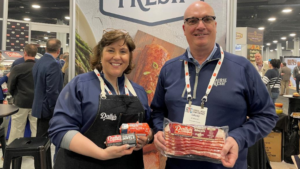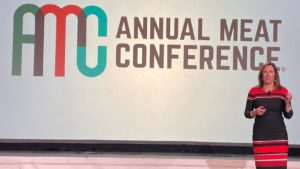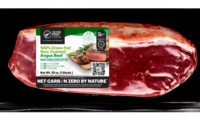NEW ORLEANS – Creekstone Farms Cure Camp brought together about two dozen chefs to sharpen their skills in butchery, curing, dry and wet aging, sausage making, and more.
Cure Camp, which took place March 13-14, is made possible by the knowledge and passion of presenters Master Butcher Bryan Butler (owner of Austin, Texas-based butcher shop and restaurant Salt and Time) and Master Charcutier Michael Sullivan, regional sales manager for Creekstone Farms.

Sullivan, a graduate of the Culinary Institute of America who held various chef positions before spending a decade as a butcher and charcutier at the award-winning restaurant at Blackberry Farm in Tennessee, said the ultimate goal of Cure Camp (which is in its seventh year) is to help ensure the crafts of butchery and curing meats don’t become lost arts.
During Cure Camp, which was hosted at the restaurant Saba located in New Orleans’ Uptown area, attendees received an up-close and in-depth look at:
- beef, lamb, pork, and duck breakdown
- whole muscle curing
- the craft of fermentation, salumi, and charcuterie
- blood sausage making (boudin noir creole -- crawdad boudin with pork blood)
- wet and dry aging beef.
Both Butler and Sullivan said that chefs’ butchery skills combined with their culinary creativity can maximize their operations’ profitability while offering patrons a unique and memorable dining experience.
“With the head and the offal I can pay for the whole animal,” Sullivan said during the pork breakdown demonstration.
Finding menu item uses for the whole animal can include chefs using pork hocks to thicken stocks or saving pork kidney fat (“gold” in Sullivan’s words) for use in baking biscuits to make them perfectly fluffy, he said.
Curing and dry aging take some work — and time, with it taking months or even years before the product is ready — so chefs adding these meat items to their menu rotation need to keep in mind which cuts are worth the effort and which are best earmarked for other uses.
“Dry age top quality beef only,” Butler said.



The whole muscle curing presentation included Francesco Lupo, director of sales and marketing for Prosciutto di Parma, who shared the story of the centuries-old tradition of using only “pork, air, time, and salt” in making the signature Italian ham.
While Sullivan shared examples of how creativity come into play when working with meat products (including using duck intestines as a lo mein substitute) he stressed that curing and aging meat isn’t only an art but also a science. Temperature, pH levels, humidity, use of curing agents, and airflow in curing/aging rooms must be administered precisely and monitored closely to ensure that the end product is safe and delivers an impactful eating experience. Sweating these details also ensures product — and money — are not lost due to spoilage or producing an inferior quality end product that must be discarded, Sullivan said.

In addition to keeping chefs engaged and adding signature protein creations to their menus, curing and dry aging programs can play into table-side marketing, with servers sharing the story of the “crazy butcher” who conceived and crafted the signature meat products.

Beef, pork, and lamb butchered during the two days of Cure Camp — along with some fresh sausage made with a little help from the audience — took a star turn during the Family Dinner that concluded the event, hosted by Chef Matthew Ridgway and prepared by the staff at Saba.
Meat used during the butchering presentations was supplied by Creekstone Farms and New Orleans-based distributor NATCO Food Service.
.png?height=50&t=1647275041&width=50)
.png?height=96&t=1647275041&width=96)





Report Abusive Comment